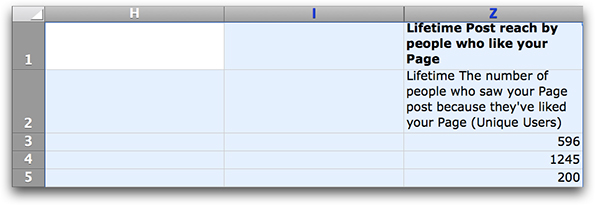Reach?
Haven’t we been discussing this metric for the whole December? Headlines everywhere report Facebook’s admission of a lower organic reach, multiple reports ascertaining this decline, and a furore from businesses over seemingly “wasted” efforts in building (buying) a fan base.
But before we jump into the argument, let’s clarify 2 things:
- The Facebook organic fan reach refers to total organic reach, which includes fans and non-fans.
- Consequently, a decrease in organic reach means a drop in both fan reach and non-fan reach, including social reach, which comes from fans interacting with your Page post.
So the pertinent questions are:
- Is your Facebook fan reach really declining?
- If yes, by how much?
Having said that, do you remember the reach counter at the bottom of every post?
It is used by smart marketers as often as the “Boost Post” button on the right. That’s right - never.
So where do you find the actual Facebook fan reach? Maybe some of you exported data from Facebook Insights.
If you did, this is what you’ll see.
Column H shows the exact same number you see at the bottom of every Page Post. It is the sum of all the figures in columns I, J and K, less double-counted users. But all these columns still include both fans and non-fans.
Unfortunately, to calculate a useful data like your page post’s fan reach, it requires a bit of work to be done on your part. The good news is that it is relatively simple to do and I have detailed the steps below. And marketers who can do this set themselves apart from the poor ones.
5 Steps to Calculate Facebook Fan Reach
Step 1: Export BOTH your Page-level and Post-level data
Before you move on to the next step, if you simply want the absolute Facebook fan reach, then you can obtain the data from Column X of your post-level spreadsheet. If you want to calculate the individual fan reach %, carry on to the next step.
Step 2: On the Post-Level spreadsheet, hide irrelevant columns
First, hide columns A and B.
Then, hide columns D to F.
 Finally, hide Columns H-W and add 2 new columns to the right of G. The important column “Lifetime Post reach by people who like your Page” should now be in column Z.
Finally, hide Columns H-W and add 2 new columns to the right of G. The important column “Lifetime Post reach by people who like your Page” should now be in column Z.
Because your fan size is likely to differ from day to day, it is not as straightforward to calculate your organic reach % by simply dividing the data in Column Z by your total number of fans. You will need the data for number of fans for each day.
Step 3: To do so, input the below headers and formulae
The only tricky part in step 3 is highlighted in the picture above. Remember that you exported the page-level data? Because the post-level data does not include the day-to-day number of fans on your page, the page-level data is required. Therefore, the highlighted part references the data in columns A and B of your excel spreadsheet.
Step 4: Drag and autofill the data in columns H & I as shown below
Step 5: To find out your long-term organic Facebook fan reach, input the formula shown below
And that concludes our tutorial - you should see your Facebook fan reach now!
Now back to the argument about a decline in Facebook Reach - to be fair, you need to analyse your page’s Facebook Fan Reach from an earlier date. As a general guideline, compare the data you have in October and November VS that of December. If you’re like me, you might be surprised to find that the decline in reach is not that serious.
If it is, something could be seriously wrong with the content you’re posting or the time you’re posting or something else. I’m quite sure the fall in reach does not create any new problems for you - it just accentuates them. That means you can’t ignore the real problems of your content anymore.
Questions? Comment below and I’ll help you out!
Useful resources
- Non Gamstop Casinos
- Non Gamstop Casinos
- Non Gamstop Casinos
- Casino Not On Gamstop
- Casino Non Aams
- Non Gamstop Casino
- Casino Sites Not On Gamstop
- UK Casinos Not On Gamstop
- Casinos Not On Gamstop
- Online Casinos UK
- Best Non Gamstop Casinos
- Sites Not On Gamstop
- Non Gamstop Casino UK
- Best Non Gamstop Casinos
- UK Casinos Not On Gamstop
- Non Gamstop Casinos UK
- UK Casino Sites
- Non Gamstop Casino Sites UK
- Casino En Ligne
- Meilleur Casino En Ligne
- Non Gamstop Casinos UK
- Non Gamstop Casinos
- UK Online Casinos Not On Gamstop
- Casino Sites Not On Gamstop
- Casino En Ligne Crypto
- Meilleur Casino En Ligne Belgique
- Siti Non Aams Scommesse
- 익명 라이브 카지노


Pingback: This is how you calculate Facebook fan reach, a...
Pingback: 7 Key Pieces of Facebook News in January 2014
Pingback: Facebook Reach Metrics: The Ultimate GuideEnglish